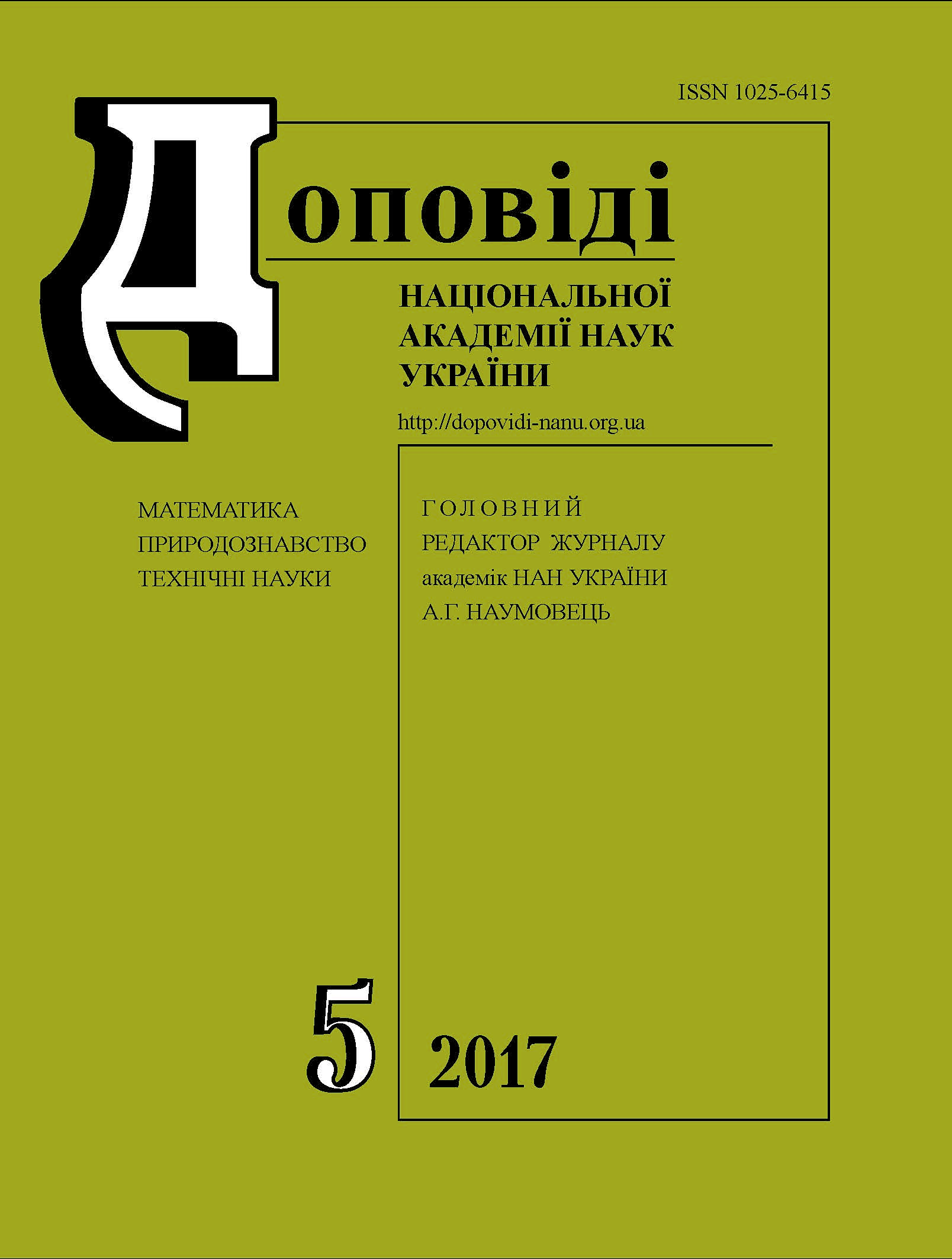Antioxidant/reducing properties of the extracts from the genus Vítex plant leaves
DOI:
https://doi.org/10.15407/dopovidi2017.05.073Keywords:
antioxidant activity, flavonoids, phenol, reducing ability, Vitex extractsAbstract
Ethanol extracts from Vitex cannabifolia, Vitex agnus-castus, and Vitex negundo leaves are prepared, and the antioxidant/reducing properties of the extracts are investigated. All the extracts are found to contain a significant amount of phenol antioxidants, including flavonoids, and possess the high ability to reduce both DPPH radicals and Ag+ ions. The activities of the extracts in the reaction with DPPH radicals and in the "green" synthesis of silver nanoparticles differ from each other and correlate with the flavonoid content and total phenol content, respectively.
Downloads
References
Katalinic, V., Milos, M., Kulisic, T. & Jukic, M. (2006). Screening of 70 medicinal plant extracts for anti oxidant capacity and total phenols. Food Chem., 94, pp. 550-557. https://doi.org/10.1016/j.foodchem.2004.12.004
Iravani, S. (2011). Green synthesis of metal nanoparticles using plants. Green Chem., 13, pp. 2638-2650. https://doi.org/10.1039/c1gc15386b
Laguta, I. V., Stavinskaya, O. N., Dzyuba, O. I. & Ivannikov, R. V. (2015). Analysis of antioxidant properties of plants extracts. Reports of the National Academy of Sciences of Ukraine, No. 5, pp. 130-137 (in Russian). https://doi.org/10.15407/dopovidi2015.05.130
Komarova, M. N., Nikolaeva, L. A. & Regir, V. G. (1998). Phytochemical analysis of medicinal plants: quidelines for laboratory sdudies. Saint-Petersburg: State Chem.-Pharmaceut. Acad. (in Russian).
Alonso, A. M., Domianguez, C., Guillean, D. & Barroso, C. G. (2002). Determination of antioxidant power of red and white wines by a new electrochemical method and its correlation with polyphenolic content. J. Agric. Food Chem., 50, pp. 3112-3115. https://doi.org/10.1021/jf0116101
Stavinskaya, O. M., Kuzema, P. O., Laguta, I. V., Pakhlov, E. M., Kazakova, O. O. & Chernyavskaya, T. V. (2007). Interaction of ascorbic acid with hydrophilic-hydrophobic silicas. Annales UMCS. Chemia, 62, pp. 124-135.
Brand-Williams, W., Cuvelier, M. E. & Berset, C. (1995). Use of a free radical method to evaluate antioxidant activity. LWT-Food Sci. Technol., 28, pp. 25-30. https://doi.org/10.1016/S0023-6438(95)80008-5
Volkov, V. A. & Pakhomov, P. M. (2008). Kinetics of the interaction of the radical DPPH with extractive substances of plants in various media. Polzunov. vestn., No. 3, pp. 309-313 (in Russian).
Litwinienko, G. & Ingold, K. U. (2007). Solvent Effects on the Rates and Mechanisms of Reaction of Phenols with Free Radicals. Acc. Chem. Res., 40, pp. 222-230. https://doi.org/10.1021/ar0682029
Rice-Evans, C. A., Miller, N. J. & Paganga, G. (1996). Structure-antioxidant activity relationships of flavonoids and phenolic acids. Free Radical Bio Med., 20, pp. 7933-7956. https://doi.org/10.1016/0891-5849(95)02227-9
Zhou, Y., Lin, W., Huang, J., Wang, W., Gao, Y., Lin, L., Li, Q., Lin, L. & Du, M. (2010). Biosynthesis of gold nanoparticles by foliar broths: roles of biocompounds and other attributes of the extracts. Nanoscale Res. Lett., 5, pp. 1351-1359. https://doi.org/10.1007/s11671-010-9652-8
Downloads
Published
How to Cite
Issue
Section
License
Copyright (c) 2024 Reports of the National Academy of Sciences of Ukraine

This work is licensed under a Creative Commons Attribution-NonCommercial 4.0 International License.



